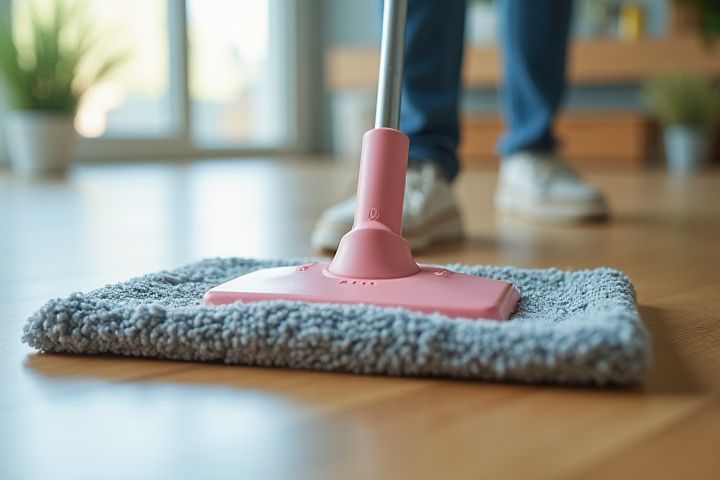
Start by decluttering each room, organizing items into keep, donate, and discard categories to create a more manageable space. Dust surfaces, including shelves, baseboards, and light fixtures, using microfiber cloths or dusters that trap particles effectively. For floors, employ a vacuum cleaner tailored for your surface type--carpeting or hardwood--and follow up with mopping using appropriate solutions for a thorough clean. Sanitize high-touch areas such as doorknobs, switches, and countertops with disinfectant wipes or sprays to reduce germs and bacteria. Lastly, maintain a fresh atmosphere by regularly updating air filters and incorporating natural air fresheners like essential oils or plants.
How To Clean A House Professionally
Effective cleaning products
To achieve a professionally cleaned house, utilize high-quality cleaning products tailored for specific tasks. For hard surfaces, a solution containing at least 70% isopropyl alcohol effectively disinfects and sanitizes. Use pH-neutral cleaners for hardwood floors to maintain the finish without causing damage, while enzyme-based products are ideal for tackling organic stains in carpet or upholstery. For enhanced air quality, consider using an air purifier to reduce allergens and musty odors, supporting a healthier living environment.
Organized cleaning checklist
An organized cleaning checklist serves as a vital tool for achieving a professional-grade clean in your home. Start by categorizing tasks into specific areas: kitchen, living room, bedrooms, and bathrooms. In the kitchen, prioritize cleaning appliances, countertops, and floors, while ensuring you wipe down surfaces with disinfectant. For bedrooms, focus on dusting surfaces, changing linens, and vacuuming carpets, creating a seamless flow that promotes an inviting atmosphere throughout your living space.
Proper cleaning techniques
To achieve a professional-level clean in your home, start by organizing your cleaning tools, including microfiber cloths, mops, and vacuum cleaners equipped with HEPA filters for improved air quality. Focus on room-by-room cleaning, beginning with dusting high surfaces, such as ceiling fans and light fixtures, before moving on to lower surfaces like furniture and countertops. Use a two-bucket system for mopping: one bucket for clean water mixed with a suitable floor cleaner and another for dirty water, ensuring a streak-free finish. Finally, incorporate specialized products for different materials, such as stainless steel polish for appliances and tile cleaner for bathrooms, to enhance the overall cleanliness and shine of your home.
Efficient time management
Efficient time management is key to professional house cleaning. Start by making a detailed checklist that includes all areas like kitchens, bathrooms, and living rooms, allocating specific time blocks for each task; for instance, dedicate 15 minutes for dusting and 30 minutes for vacuuming. You can enhance productivity by gathering all necessary cleaning supplies before you start, reducing distractions and saving time during the cleaning process. Lastly, consider using a timer to keep yourself accountable, ensuring each task is completed within its designated timeframe and optimizing overall productivity.
High-quality cleaning tools
Using high-quality cleaning tools is essential for achieving a professionally clean house. Invest in vacuum cleaners with HEPA filters, which can remove up to 99.97% of dust, allergens, and pollutants from your home. Microfiber cloths, known for their absorbency and ability to trap dirt, can hold up to seven times their weight in water, making them superior for dusting and wiping surfaces. Consider choosing eco-friendly cleaning solutions that not only ensure a thorough clean but also safeguard your family's health by minimizing exposure to harmful chemicals.
Particular attention to detail
Thoroughly declutter each room by sorting items into categories like keep, donate, or discard, ensuring surfaces are clear for a deep clean. Dust from top to bottom, starting with ceiling fans and light fixtures, and moving to furniture and baseboards, using a microfiber cloth to capture allergens effectively. For floors, vacuum and mop using appropriate cleaners based on the surface type, whether hardwood, tile, or carpet, prioritizing the removal of stains and dirt. Don't overlook high-touch areas such as doorknobs, light switches, and remote controls, as these require disinfection to maintain a hygienic environment.
Safe cleaning practices
To achieve a professional clean while prioritizing safety, start by using environmentally friendly cleaning products, such as vinegar or baking soda, which effectively eliminate bacteria without harmful chemicals. Ensure proper ventilation in your cleaning area; open windows and use exhaust fans to minimize exposure to any fumes. For surfaces that require disinfection, a solution of 70% isopropyl alcohol can be highly effective against viruses, while being safe for your health. Wearing gloves and a mask can further protect you from allergens and irritants present in common cleaning agents, ensuring a thorough yet safe cleaning process.
Systematic room-by-room approach
Begin your professional house cleaning by assessing each room individually to determine specific needs. In the kitchen, declutter countertops and clean appliances, followed by scrubbing surfaces and sanitizing sinks to eliminate bacteria. Move to the living room, focusing on dusting furniture, vacuuming carpets or mopping floors, and organizing items for a polished appearance. For bedrooms, prioritize changing linens, dusting surfaces, and ensuring closets are tidy, creating a serene and inviting space.
Understanding surface materials
Understanding surface materials is crucial for effective professional house cleaning. Different surfaces, such as wood, laminate, tile, and glass, require specific cleaning agents and techniques to avoid damage and ensure a thorough clean. For example, using a microfiber cloth on hardwood floors helps remove dust without scratching, while glass surfaces benefit from ammonia-free cleaners to prevent streaks. By recognizing the unique needs of each material, you can select appropriate products and methods that maintain the integrity and appearance of your home's surfaces.
Disposal of waste and toxins
Begin by identifying hazardous waste materials, such as old paint, batteries, and electronic waste, ensuring safe disposal according to local regulations. Use designated collection centers or scheduled hazardous waste disposal days to minimize environmental impact. For toxins, utilize eco-friendly cleaning products that reduce harmful emissions while effectively eliminating germs and allergens in your living space. Prioritize the disposal of expired chemicals and unused household cleaners, ensuring they are not poured down the drain or thrown in regular trash.
